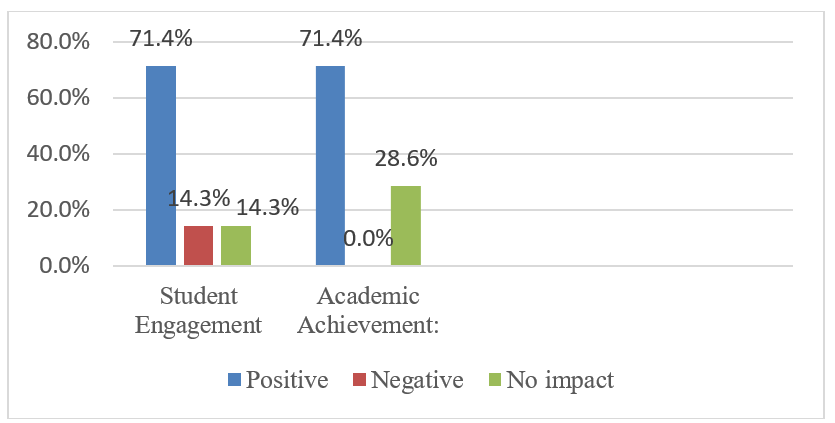Impact of Technology Integration on Secondary Level Education in Bangladesh: A study in Dhaka City
DOI:
https://doi.org/10.59738/jstr.v5i1.23(75-82).fjsi5248Keywords:
Technology Integration, Secondary education, Impact, Academic achievement, Engagement, ICTAbstract
Considering the growing technical proficiency of the education system, it is imperative for learners to stay current on developing digital trends while simultaneously acquiring a comprehensive understanding of the subject matter. Educators possess a remarkable potential to engage and foster academic achievement using technology throughout the curriculum. In accordance with the prevailing global pattern, students in Bangladesh exhibit a substantial level of engagement with information and communication technology (ICT) components. The aim of this study is to examine the effects of incorporating technology into secondary education in Bangladesh. Also, to assess the level of technological integration in secondary schools, together with the perceived advantages and obstacles associated with its implementation. The present study employs a mixed method approach. Qualitative data was collected through focus group discussions with instructors in order to gain insights into their experiences, opinions, and attitudes towards the integration of technology. Quantitative data was obtained through the utilization of questionnaires. The research encompassed a cohort of seven (7) educators at the secondary school level, as well as a group of forty (40) students from three educational institutions within the Dhaka City. The results indicated that the integration of technology had a positive impact on student engagement, academic achievement, and instructor efficacy. Nevertheless, some challenges have been identified in relation to infrastructure, accessibility, and training. The results of the study suggest that the incorporation of technology into secondary education in Bangladesh holds promise for improvement.
Downloads

Published
How to Cite
Issue
Section
License
Copyright (c) 2024 Journal of Scientific and Technological Research

This work is licensed under a Creative Commons Attribution-NonCommercial 4.0 International License.






